The Saint Emeric Memorial Year proclaimed for 1930–1931 moved the whole country and the settlements around Pest, which are now parts of Budapest. The two-year event series was such an important event that Pestszentimre, which belongs to the 18th District today, took the name of our first king's, St. Stephen's, son. The settlement had previously been called Soroksárpéteri.
The 18th District of Budapest was established in 1950 by merging two independent settlements, the large village of Pestszentimre and the city of Pestszentlőrinc. St. Emeric, the patron saint of youths, was given a special role in the two young settlements' lives.
Today's Pestszentimre was built at the turn of the 20th century on the border of Soroksár by parcelling out agricultural lands. Favourable land prices and good transport attracted those who could only get a modest apartment or room rental in Budapest. Here they could build their own house, so the settlement originally called Soroksárpéteri grew quickly.
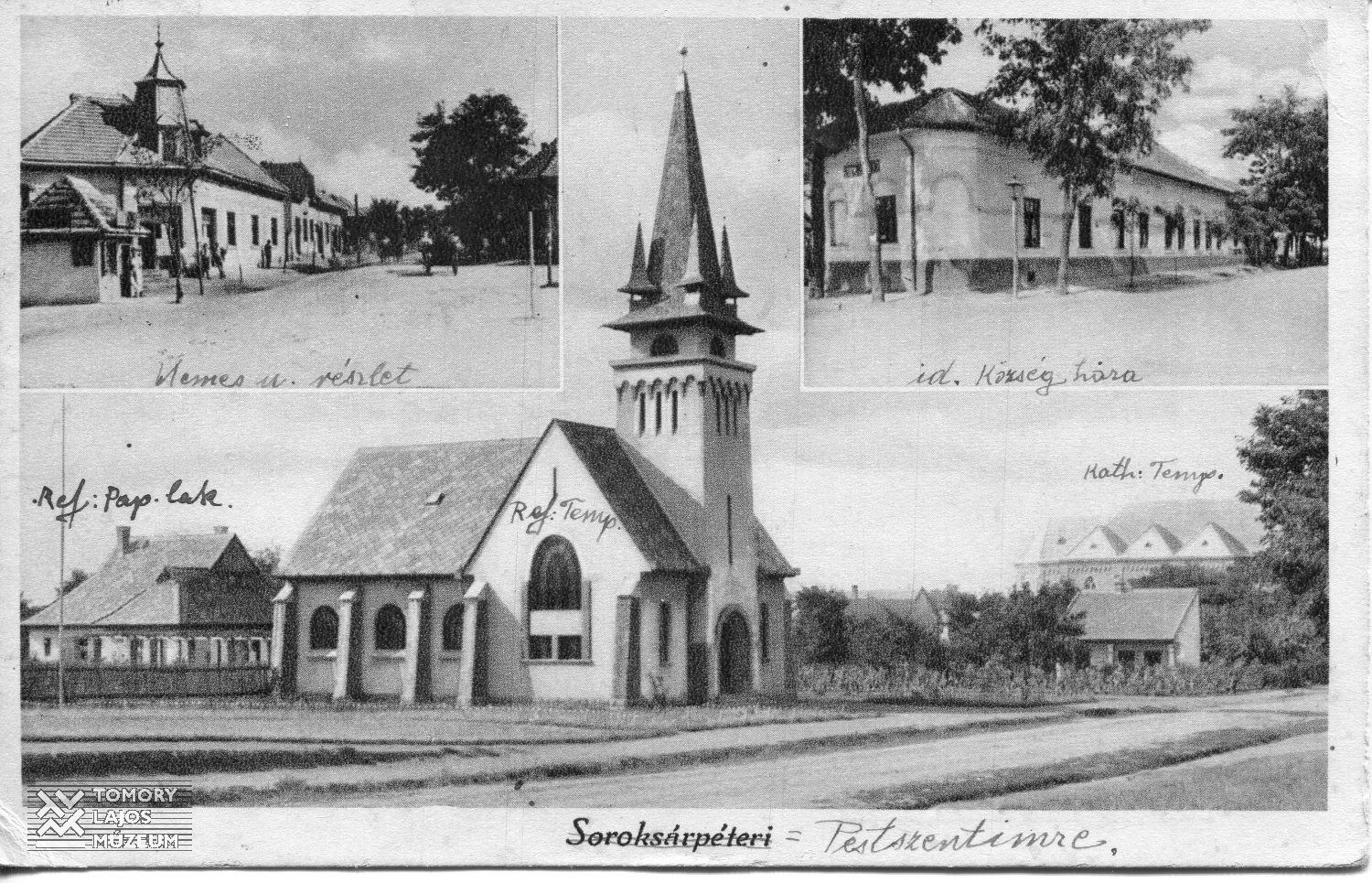
Postcard from Pestszentimre (Soroksárpéteri) from 1931 with the Reformed Church (Source: Lajos Tomory Museum)
By 1928, 7,500 people lived there, and the settlement became an independent village. The decision declaring this was announced by the Ministry of the Interior on 8 January 1930, so a new settlement was born in Pest county, temporarily called Soroksárpéteri. However, the people of the village did not like this name. On the one hand, because it reminded them that they had seceded from Soroksár, and on the other hand, there was already a settlement in the county called Péteri, which could have caused misunderstandings. That is why they decided to choose a new name.
It came to pass that the settlement became independent at the time of the St. Emeric year, so at the suggestion of the local Catholic parish priest, Dr Mihály Schaub, the name Pestszentimre was applied for. Mihály Schaub justified the choice of name – beyond the jubilee year – because the purity of the prince could be symbolic for the newly born village as well. The Ministry of the Interior approved the idea in the summer of 1931, accepting the name Pestszentimre.
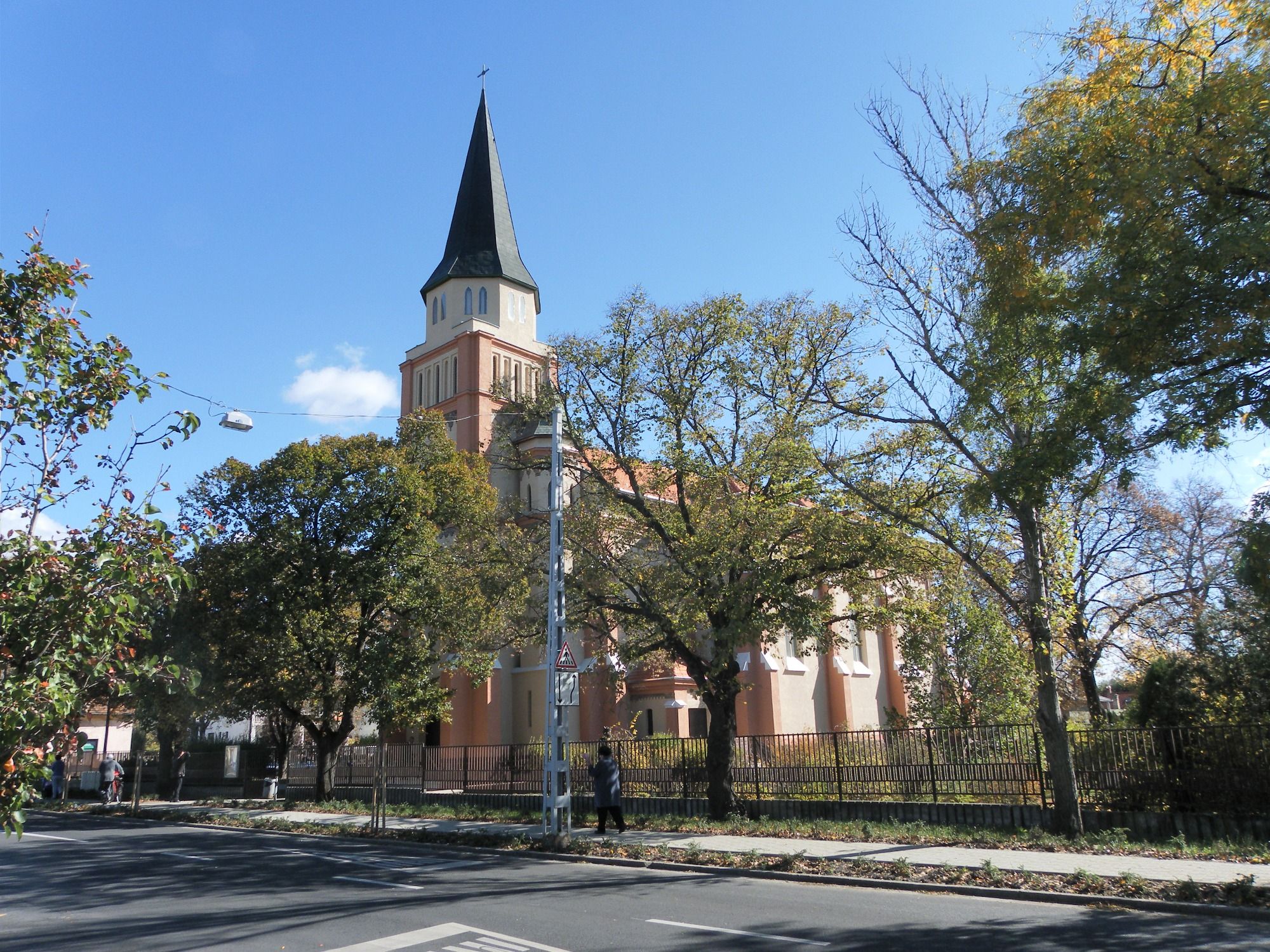
The Church of St. Emeric in 2013 (Photo: Tamás László Pápai)
Another argument of Mihály Schaub was that the patron saint of the Roman Catholic church being built in the settlement would also be Saint Emeric. The construction of the three-aisled, Neo-Gothic church began in 1926 according to the plans of Mihály Bánszky. By 1928, it was structurally complete, and the first Mass could be held under the newly-made roof. However, further construction progressed slowly. Despite Schaub's attempts to raise funds, the poor community of Pestszentimre was only able to make small contributions to the church occasionally.
Thus, the construction lasted for another 10 years. The church was consecrated on April 10, 1939, on Easter Monday by István Hanauer. However, the unfinished building was blown up by a Hungarian sapper corps at the end of 1944, during the siege of Budapest, to ensure that the Russians could not use the tower as an observation post.
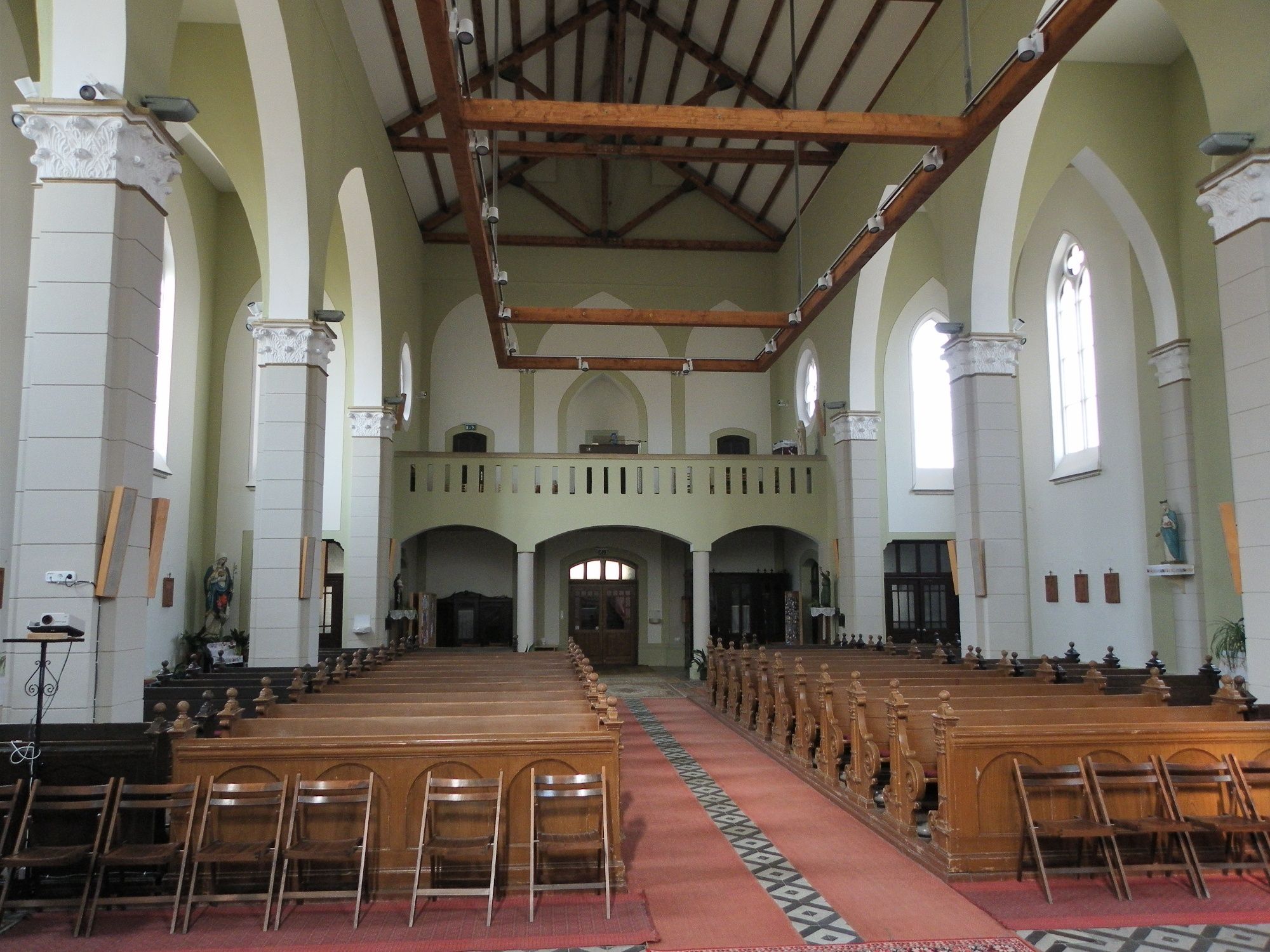
Interior of St. Emeric Church in 2013 (Photo: Tamás László Pápai)
Mihály Schaub thus spent the last years of his life organizing the reconstruction, which often proved to be a hopeless struggle and undermined his health. His successors restored the building between 1955 and 1959, the tower in 1961–1962, and after nearly thirty years, the church was consecrated again in 1968. It gained its present form in 1990 when the spire was put in place. A statue of the patron can be found on the main altar; it is the work of Géza Hiesz. Another stands in the church garden, erected in 2001 and carved from wood by Otto Frech.
But in another part of the 18th District, in the church garden of Pestszentlőrinc, there is a third statue of St. Emeric. However, it was not made of wood but bronze. Sculptor Lajos Visnyovszky made the first public sculpture in Pestszentlőrinc. Although Visnyovszky lived in Batthyány Lajos Street near the church in Pestszentlőrinc and made the main altar of the parish church of the Immaculate Heart of Mary and the World War II memorial on the main square of the settlement; he cannot be considered a mere local craftsman.
He was a renowned artist of his time, he learned the craft as a child, and after graduating from the College of Fine Arts, he tried his hand at several art forms. In addition to his public sculptures, he excelled primarily in designing medals and coins. His ecclesiastical works were awarded a papal award in 1926, and his sculpture titled Maria Immaculata won a grand prize at the St. Emeric Year Exhibition of Ecclesiastical Art. The statue of St. Emeric was ordered from him by the church council of Pestszentlőrinc.
“Back last year in connection with the jubilee year of St. Emeric, the Church Council decided to erect a statue of Prince St. Emeric in the church park. They commissioned Lajos Visnyovszky, a local sculptor to make the sculpture. The plan was to unveil the statue in the jubilee year, but it was not completed by the set time because we had changed the original plan. The shape of the statue was cast in bronze instead of Ruskica marble. It was erected by the artist in the month of October, and since we wanted to avoid the ceremonies because of the great misery, we decided to unveil the statue and inaugurate the organ on the same day. That has happened on October 18. "
- recalled the parish priest, Béla Wimmerth, on the pages of the 1931 Historia Domus of the parish of Pestszentlőrinc.
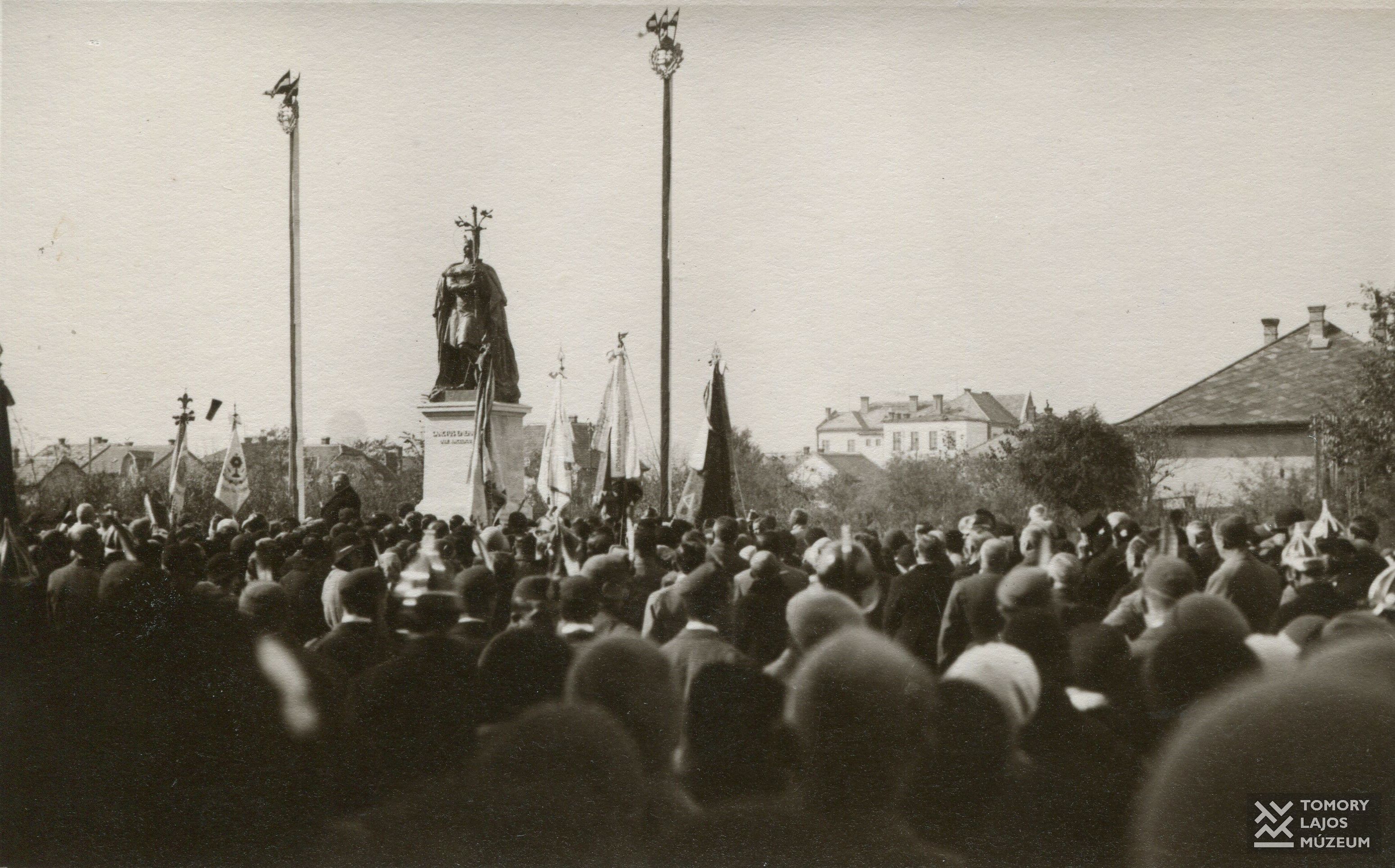
Inauguration of the statue of St. Emeric (Source: Tomory Lajos Museum)
The inauguration ceremony began on Sunday, 18 October 1931, at 9 a.m. with a Mass celebrated by Dr István Hász, a military bishop, who then consecrated the newly made organ of the church. Then the faithful flocked to the church garden, where István Hász unveiled and blessed the statue of St. Emeric in the presence of the leaders of the village and the county. In his inaugural speech, Károly Huszár, former Prime Minister and then Chairman of the Organizing Committee of the Saint Emeric Year, explained that this was a worthy end to the jubilee year.
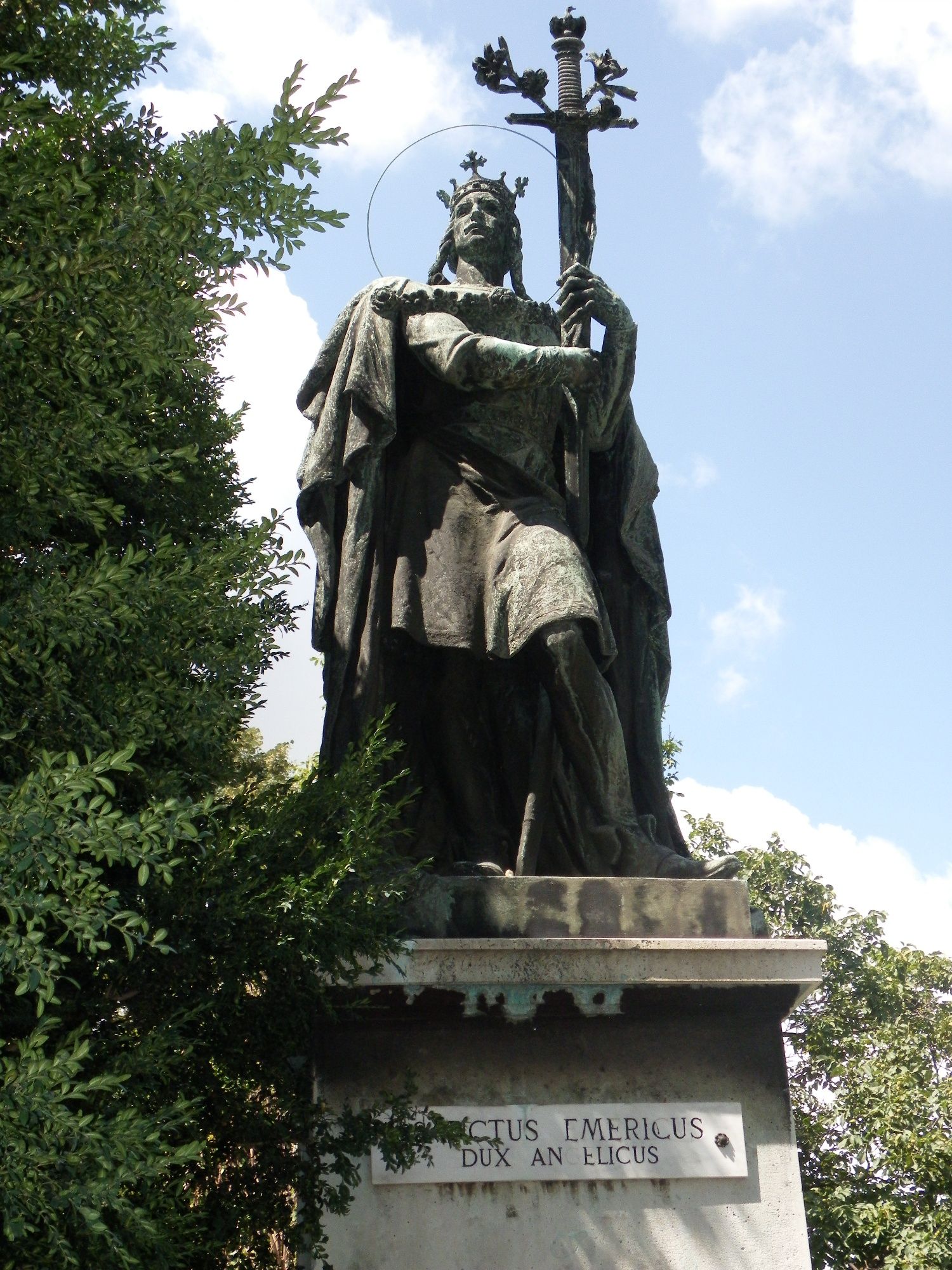
The patinated statue of St. Emeric in its old place, in 2012 (Photo: Tamás László Pápai)
As it turned out, the statue was not placed well. Although it was in a public square, it was still hidden next to the church in the fenced church garden, surrounded by buildings and later obscured by plants, so few knew about it. However, in 2019, the time came for the patinated bronze statue to be cleaned and renovated.
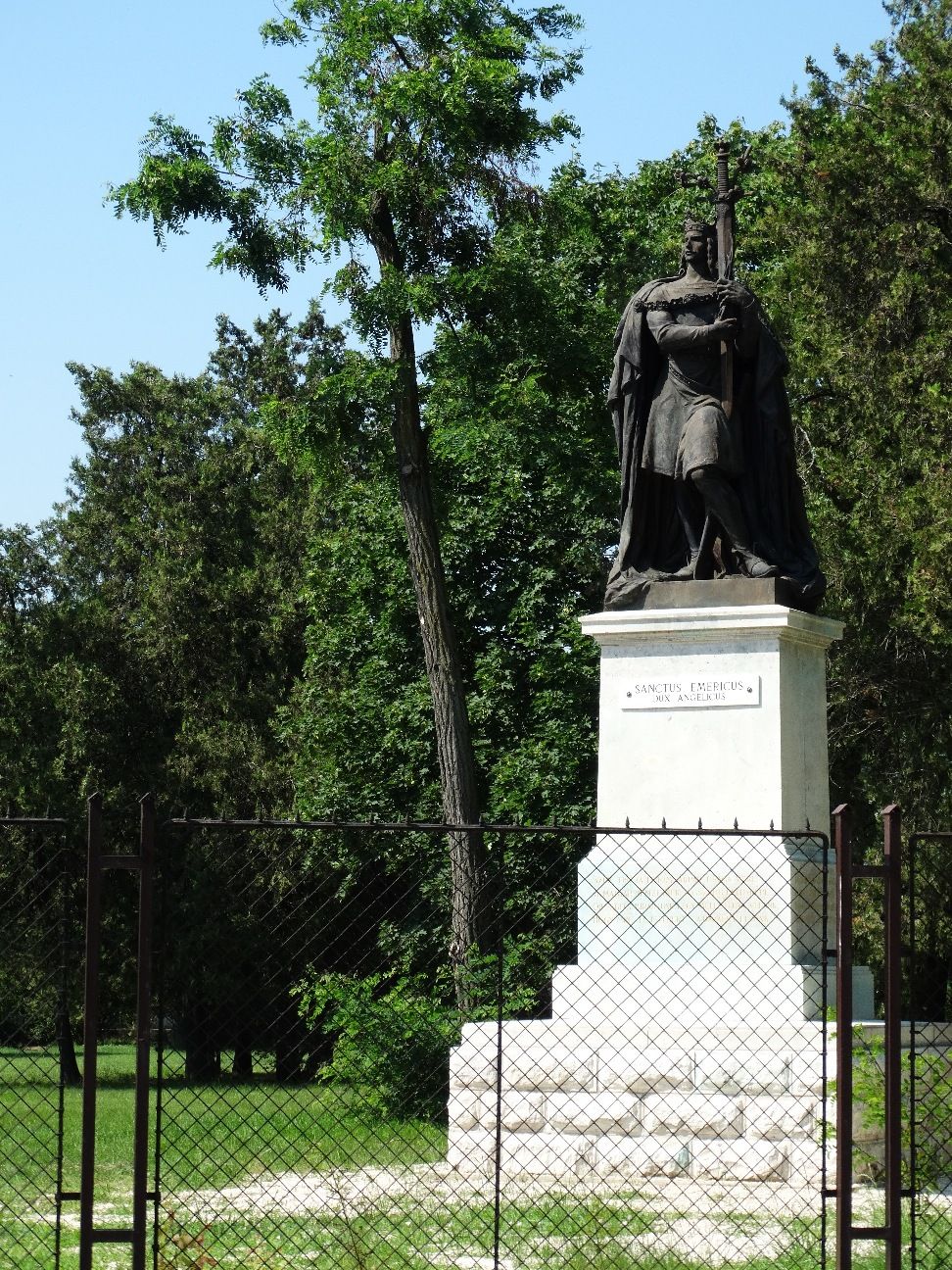
The renovated statue of St. Emeric in its new place, in 2021 (Photo: Tamás László Pápai)
It was then suggested that it not be re-erected in its old place but relocated to a more visible place in the churchyard. Therefore it was placed on the corner of the garden on Batthyány Lajos Street–Petőfi Street, right next to the fence, with decorative lighting. It was inaugurated on 7 October 2019, when György Snell, auxiliary bishop of Esztergom and Budapest, blessed the statue of Saint Emeric in Pestszentlőrinc.
Cover photo: The statue of St. Emeric in Pestszentlőrinc in its old place, 2012 (Photo: Tamás László Pápai)

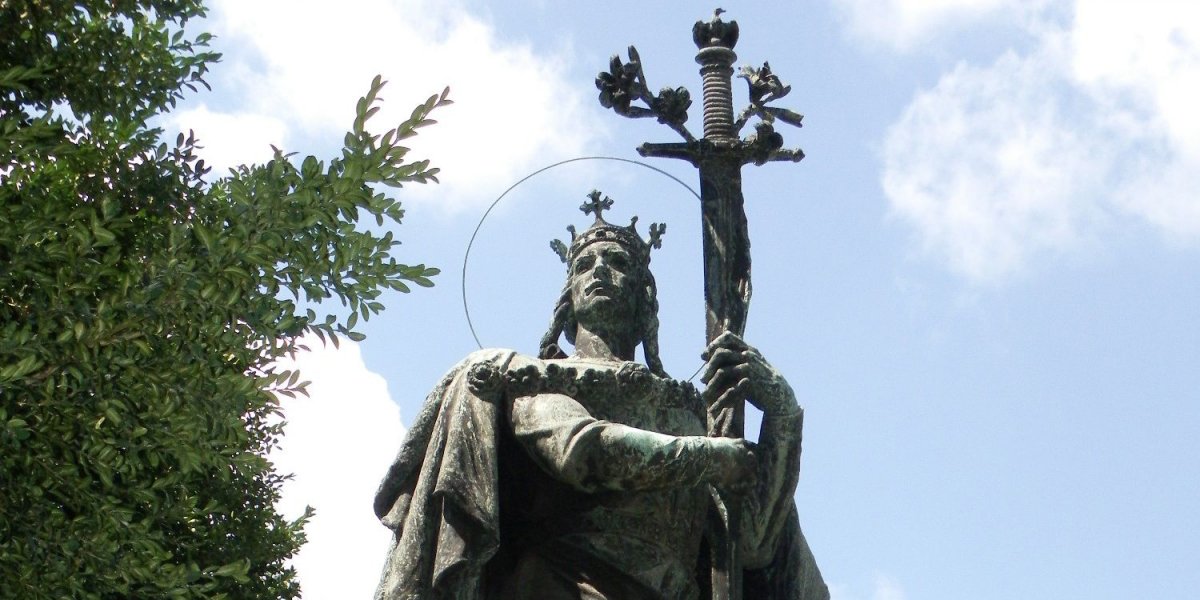



































Hozzászólások
Log in or register to comment!
Login Registration